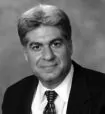Action Item: Companies and individuals should continue to be mindful that the Enforcement Division will aggressively pursue securities fraud violations and will be increasing its personnel and technology resources to accomplish its goals.
Andrew Ceresney, Director of Enforcement, U.S. Securities and Exchange Commission (the "Commission"), testified on March 19, 2015, before a subcommittee of the House Committee on Financial Services. Mr. Ceresney outlined the major focuses of the Enforcement Division's activities in 2014, as well as its outlook for 2015. The following is an overview of the testimony.
- In 2014, the Commission brought the highest number of enforcement actions to date, 755, and obtained monetary remedies of more than $4.16 billion. For 2016, the Enforcement Division submitted a budget request for funds for 93 additional positions to expand enforcement efforts.
- Partially as a result of the creation of the Financial Reporting and Audit Task Force, which is dedicated to detecting fraudulent or improper financial reporting, the number of financial reporting and auditing filed actions and investigations initiated by the Enforcement Division increased by 40%.
- The Enforcement Division continues to focus on investment advisors and the funds they manage, with attention directed to conflicts of interest, misrepresentations regarding performance or investment strategies, and breaches of fiduciary duty. The Enforcement Division has also begun concentrating on custody rule violations, the adequacy of investment advisor compliance programs, and undisclosed advisor fees. As well, the Enforcement Division launched an initiative that identifies unusual performance returns posted by hedge fund advisors, which resulted in more than 10 enforcement actions in 2014.
- The Enforcement Division will continue to work closely with the Office of Compliance, Inspections and Examinations ("OCIE") and the Trading and Markets Division to ensure compliance with Commission Rules and bring enforcement actions when appropriate.
- With the rise of sophisticated trading technologies, such as algorithmic and automated trading, the Enforcement Division has brought a number of actions against market participants, including exchanges and other trading platforms, for violating operating rules and for manipulative trading.
- The Enforcement Division has made municipal securities transactions a priority, given that those transactions often involve pension funds and retail investors. Alleged bond offering misrepresentations, failures by underwriters to meet their obligations, undisclosed conflicts of interest, and pay-to-play violations have been given special attention.
- The Enforcement Division will continue to stay active in pursuing insider trading, using new technological tools to identify suspicious trading patterns and connections between traders and potential sources.
- The Enforcement Division is directing its attention to those who allegedly facilitate "pump and dump" and pyramid schemes using social media to conduct fraudulent promotional campaigns.
- The Structured and New Products Unit has been rebranded the Complex Financial Instruments Unit, which will continue to prioritize actions against credit rating agencies, and investigate commercial mortgage backed securities ("CMBS"), valuation issues for funds, and enforce the derivative-related provisions of the Dodd-Frank Act.
- The Enforcement Division is emphasizing the importance of the roles played by "gatekeepers" such as attorneys, accountants, fund directors, board members, transfer agents, broker-dealers, and other industry professionals, with a view toward holding those gatekeepers accountable in connection with fraudulent schemes.
- The Enforcement Division is continuing to aggressively pursue violations of the Foreign Corrupt Practices Act ("FCPA"), using a specialized FCPA unit for this purpose.
- Despite the Commission having updated its long-standing settlement protocol in June 2013, by requiring admissions of misconduct, the Commission will continue to resolve most cases on a "neither admit nor deny" basis, and only intends to seek admissions in cases in which heightened accountability appears appropriate. These are cases where large numbers of investors are harmed, where markets or investors were placed at significant risk, where the conduct obstructs the Commission's investigation, where an admission can send "an important message to the markets," or where the wrongdoer poses a particular future threat to investors or the markets.
Conclusion
While cases stemming from the financial crisis may be diminishing, the Enforcement Division intends to continue aggressively pursuing potential securities violations, including partnering with OCIE and the Trading and Markets Division to ensure compliance with Commission Rules and bring enforcement actions when appropriate. "Gatekeepers," market participants, and industry professionals appear to be prominent in the Division's sights, and the Division is also broadening its areas of inquiry, targeting areas such as compliance programs, and conflicts of interest as bases for its investigations and suits. The Enforcement Division is developing new technology tools to enable it to more effectively discover and prosecute securities fraud. Finally, most cases will continue to be resolved on a "neither admit nor deny" basis, despite the change to long-standing settlement protocol made by the Commission in June 2013, requiring admissions of misconduct.
The content of this article is intended to provide a general guide to the subject matter. Specialist advice should be sought about your specific circumstances.


